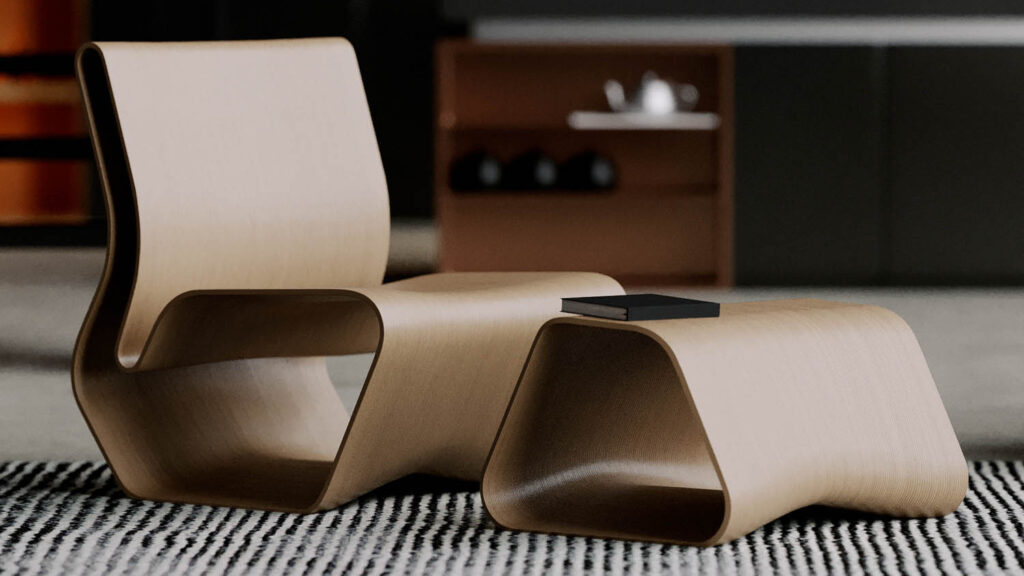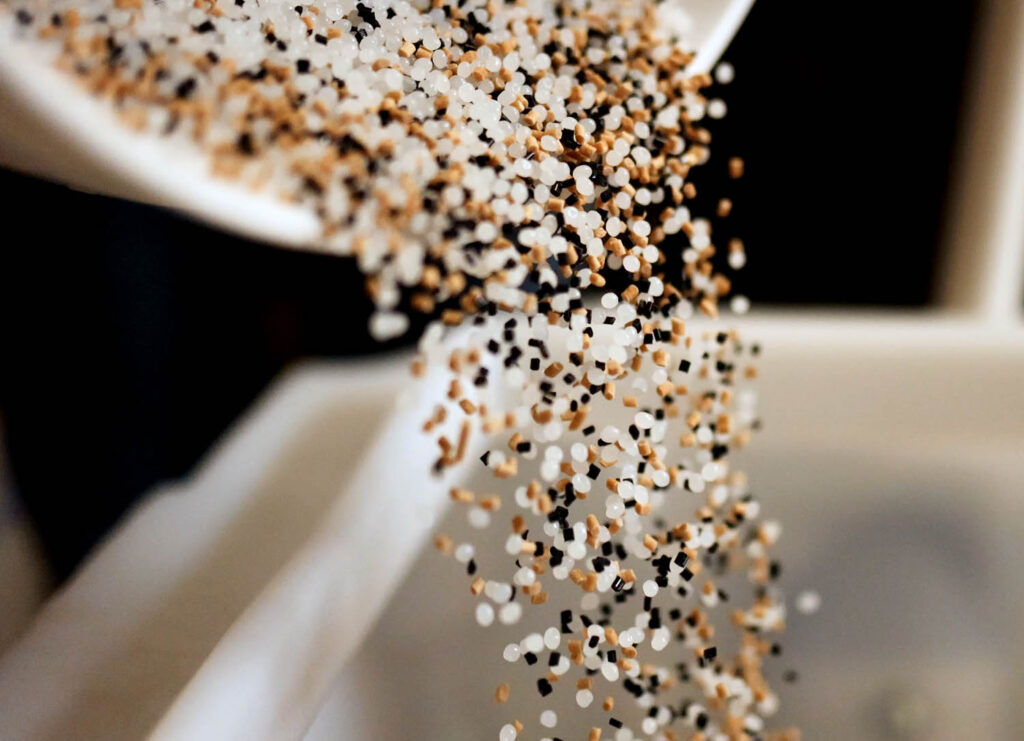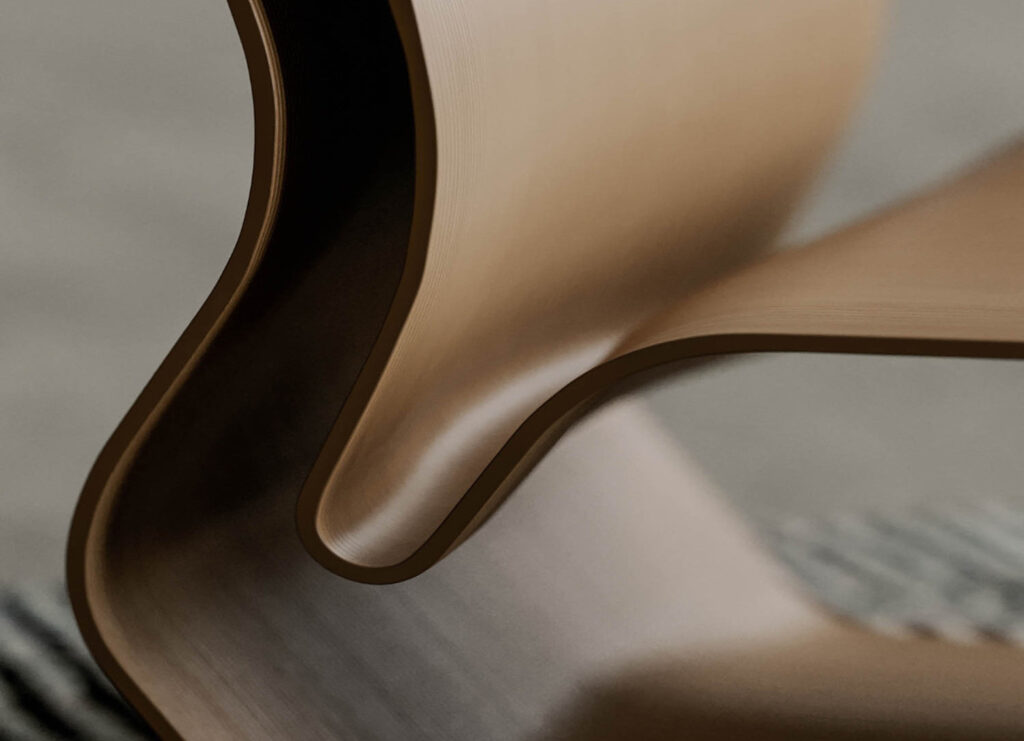Model No. Furniture aims to reshape the industry with its approach to zero-impact high-end furniture by blending computational design, materials science, and manufacturing technology
Commercial interior turnover happens at a rate of about every five years, according to Model No. Furniture CEO Phillip Raub. That’s a whole bunch of workplace seating, desks, lighting and ancillary items destined for the scrap heap, or more accurately, the landfill site.
By that point, such items have already generated masses of carbon emissions and waste. “Most of the furniture for these interiors is made overseas, made from petroleum-based plastics, made with antiquated manufacturing processes, shipped in containers, and stored in huge facilities.”
Founded in 2018 in Oakland, California, Model No. Furniture is on a mission to change this scenario, by designing and building furniture that boasts zero waste and a fully circular lifecycle. Since its inception, it has focused on streamlining the process with digital design and fabrication tools, bio-resins and non-toxic materials. It now offers a wide range of indoor and outdoor seating, workspace furniture and lighting for commercial environments.
Wood is sourced locally in the Bay Area to create furniture with its CNC machine capability. Sawdust waste is turned into custom-compound 3D-printable bio-resin pellets. The upcycled wood-filled PLA pellet material is then used for printing unique pieces of furniture that complement the wood designs, while also neutralising the environmental impact of the subtractive milling process.
According to Raub, whether 3D printing with bio-resins, machining wood or sewing fabric, all the materials that Model No. uses are regenerative, biodegradable, recyclable and certified sustainable. And all the company’s resins are formulated from upcycled plant-waste that can compost in as few as five years, he says.
“In the future, these technologies will provide our customers and brand partners with the ability to develop after-life solutions for our products. In the meantime, we also offer a take-back programme to customers. And everything we make is waste-free because we use the most advanced large format 3D printers from 3D Systems that are essentially zero waste and run on solar energy,” he says.
Digital advantage
Model No. Furniture maximises the advantages of digital fabrication with unique designs and iterative processes, as well as enabling mass customisation and responsive manufacturing. “We make everything on-demand and domestically, or locally when possible. Our customers can customise their products or to order from a pre-designed catalogue, thus eliminating the need for inventory and wasteful production,” Raub explains.
With the ability to tweak designs through its Autodesk Fusion 360 CAD models and early 3D-printed prototypes, the company can quickly expand beyond a single design and create a whole family of products based on one idea without need for warehousing.
Order placement to delivery generally takes around eight weeks, with larger orders taking around 12 weeks – but this longer lead time is offset by savings in storage and overseas shipping costs.
To manage demand, the company has continued to add 3D printers to increase production capacity organically. Today, it operates three 3D Systems EXT 1070 Titan Pellet 3D printers that run almost continuously, offering a build volume of 1070 x 1070 x 1118mm to easily handle full-size furniture in a single build.
3D printing with pellets allows designers to choose from a wider range of materials than the specific filaments or resins used in most additive manufacturing processes. This gives the team more control over the materials science of what goes into the company’s products, while still benefiting from the proliferation of pellet-form thermoplastics that are rapidly becoming far cheaper and more readily available.
This technology has allowed Model No. Furniture to make best use of bio-resin compounds, while at the same time create unique forms at greatly increased deposition rates to build products faster. In other words, more speed, and less waste.
This article first appeared in DEVELOP3D Magazine
DEVELOP3D is a publication dedicated to product design + development, from concept to manufacture and the technologies behind it all.
To receive the physical publication or digital issue free, as well as exclusive news and offers, subscribe to DEVELOP3D Magazine here








